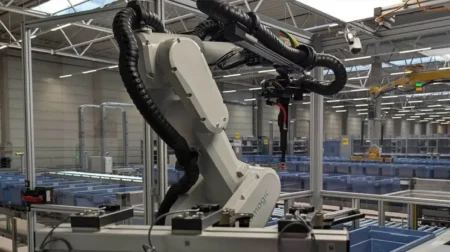New research has shown a chewing robot with built-in humanoid jaws could provide opportunities for pharmaceutical companies to develop medicated chewing gum, which has been recognised as a new advanced drug delivery method.
The aim of the University of Bristol study, published in IEEE Transactions on Biomedical Engineering, was to confirm whether a humanoid chewing robot could assess medicated chewing gum. The robot is said to be capable of closely replicating the human chewing motion in a closed environment. It features artificial saliva and allows the release of xylitol, a chemical compound in gum, to be measured.
The study wanted to compare the amount of xylitol remaining in the gum between the chewing robot and human participants. The research team also wanted to assess the amount of xylitol released from chewing the gum.
The researchers found the chewing robot demonstrated a similar release rate of xylitol as human participants. The greatest release of xylitol occurred during the first five minutes of chewing and after 20 minutes of chewing only a low amount of xylitol remained in the gum bolus, irrespective of the chewing method used.
Saliva and artificial saliva solutions respectively were collected after five, 10, 15 and 20 minutes of continuous chewing and the amount of xylitol released from the chewing gum established.
Dr Kazem Alemzadeh, senior lecturer in the department of mechanical engineering at the University of Bristol, who led the research, said: “Bioengineering has been used to create an artificial oral environment that closely mimics that found in humans. Our research has shown the chewing robot gives pharmaceutical companies the opportunity to investigate medicated chewing gum, with reduced patient exposure and lower costs using this new method.”








